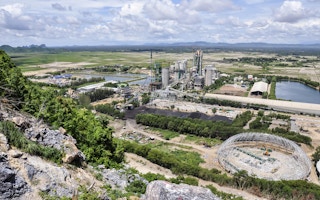In 2014 Holcim, the Swiss building materials company, announced an ambitious sustainable development strategy that aims to balance action around resource use, climate protection and community engagement. One of Holcim’s key sustainability challenges is that the resource-intensive nature of cement manufacturing is not fully factored into production costs.
To enhance its understanding of the situation, Holcim looked for suitable quantification methodologies, and in 2013, Holcim’s Indian subsidiary Ambuja Cements began its journey to identify and quantify the complete social and environmental impacts of its Indian operations.
In 2014 Ambuja Cements published the first Social and Environmental Profit and Loss (SE P&L) analysis using KPMG’s True Value methodology. It is the first company in that sector to go public with the results of this type of analysis. Holcim has since expanded its application of the SE P&L analysis from India to several other subsidiaries around the world.
The Approach
Holcim engaged KPMG to apply our True Value methodology to calculate the socio-economic and environmental value that it creates, and reduces, for society. The project team included multi-disciplinary professionals from Holcim/Ambuja and KPMG with backgrounds in corporate finance, sustainability, operations and other functions.
This multi-disciplinary approach proved to be critical as it ensured a high level of knowledge sharing between functions and teams. Together, the project team applied the first step of the True Value methodology which was to identify Ambuja Cements’s material externalities - or factors that affect its business - and classify them as either positive or negative.
Together with the company experts, KPMG professionals quantified these factors and applied a financial value to them using expert input and best available global, regional and site specific data sources.
Measuring and calculating the true value of cement manufacturing
In line with its long-term vision, Holcim is pioneering the use of the SE P&L analysis to measure and calculate the true value of cement manufacturing. The analysis, which is published in the Ambuja Cements 2013 Sustainable Development Report, has helped Holcim identify and estimate economic values for material environmental and social externalities (positive and negative impacts on people and the environment).
After these factors were identified and quantified, the data was mapped in a ‘True Value’ earnings bridge allowing Holcim to identify three negative environmental externalities (GHG emissions, water extraction and land disturbances).
In this case the main drivers of internalization - or the consolidation or change in behaviour - were new/more stringent regulations (around water extraction and energy efficiency), changing market dynamics and increased stakeholder action from NGOs, local communities and employees.
Key Takeaways
After being involved with the Holcim-Ambuja project, I would recommend SE P&L analysis to organizations seeking to gain a quantified view of their material externalities (positive and negative), and an understanding of the likelihood of internalization.
Ambuja has found that the SE P&L analysis was an effective ¨communications¨ tool for leveraging sustainability understanding internally. Prior to implementation, many employees and managers still perceived sustainability as an elusive concept. As SE P&L analysis is intended to examine only material socio-environmental issues, it helped shift the conversation towards materiality and business performance.
The influence on employee and management perception was most notable around Ambuja’s water management strategy where, for example, in anticipation of rising water costs, Ambuja is now phasing out groundwater consumption and increasing reliance on rainwater harvesting.
Barend is partner and global head of Sustainability Advisory at KPMG. He established and led KPMG´s Global Center of Excellence for Climate Change & Sustainability. Recently he led the development of KPMG’s True Value methodology, a tool that enables companies to quantify and monetize their societal value and build it into decision-making. He authored the related publication, A New Vision of Value. Barend also acts as an external liaison for KPMG with key partner organizations, such as the World Business Council for Sustainable Development (WBCSD).


















